Oklahoma City, OK Pollen and Allergy Report for Summer 2023
Pollen Allergy Trends in Oklahoma City, OK
When is pollen lowest in Oklahoma City, OK?

February
Lowest month total PPM
Avg. PPM
When is pollen highest in Oklahoma City, OK?

March
Highest month total PPM
Avg. PPM
How does pollen in Oklahoma City, OK compare to Oklahoma?
Oklahoma City has a lower average PPM than the state of Oklahoma.
Oklahoma City yearly avg PPM:
Oklahoma yearly avg PPM:
How does pollen in Oklahoma City, OK compare to the USA?
Oklahoma City has a higher average PPM than the USA.
Oklahoma City yearly avg PPM:
USA yearly avg PPM:
Is pollen worse this year in Oklahoma City, OK?
Spring 2023 was worse than spring 2022.
Spring 2023 PPM:
Spring 2022 PPM:
Average PPM in Oklahoma City, OK
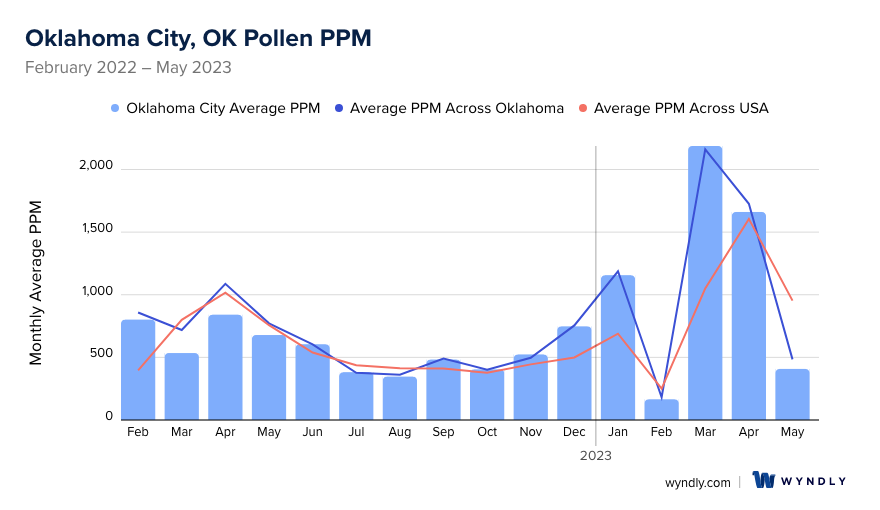
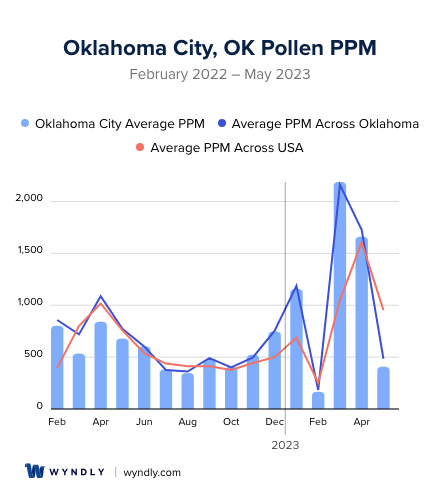
Oklahoma City, OK Pollen and Allergy Breakdown by Month
Grass
When is grass pollen highest in Oklahoma City, OK?
February has the highest grass pollen in Oklahoma City, OK with an average PPM of
When is grass pollen lowest in Oklahoma City, OK?
December has the lowest grass pollen in Oklahoma City, OK with an average PPM of
Tree
When is tree pollen highest in Oklahoma City, OK?
March has the highest tree pollen in Oklahoma City, OK with an average PPM of
When is tree pollen lowest in Oklahoma City, OK?
July has the lowest tree pollen in Oklahoma City, OK with an average PPM of
Weed
When is weed pollen highest in Oklahoma City, OK?
December has the highest weed pollen in Oklahoma City, OK with an average PPM of
When is weed pollen lowest in Oklahoma City, OK?
February has the lowest weed pollen in Oklahoma City, OK with an average PPM of
Oklahoma City, OK Pollen Monthly Breakdown by Pollen Type
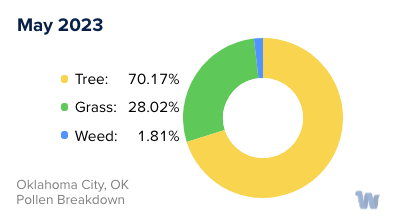
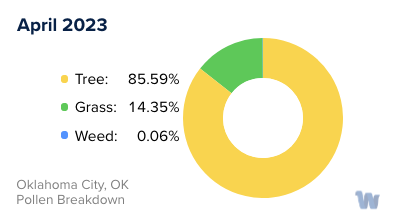
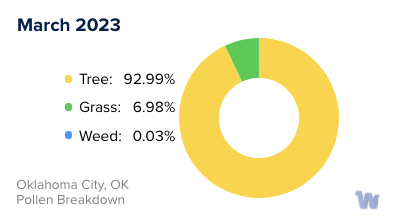
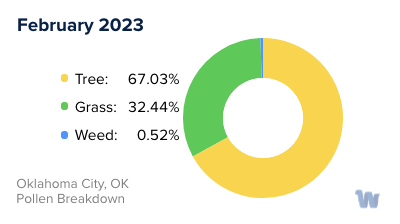
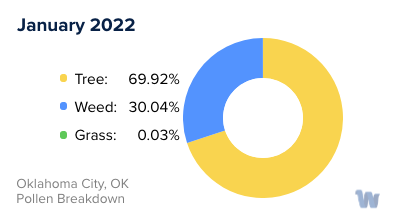
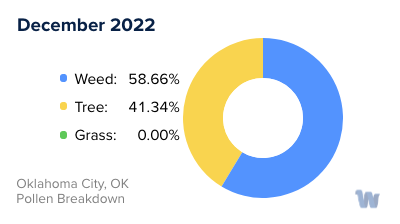
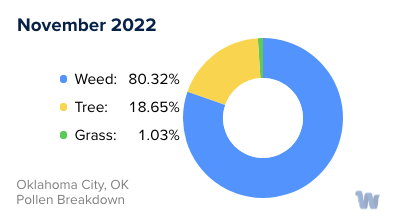
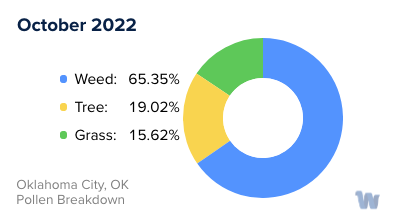
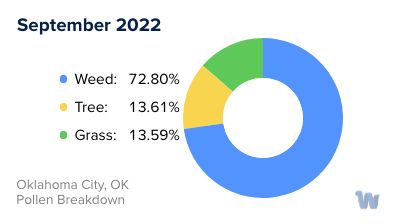
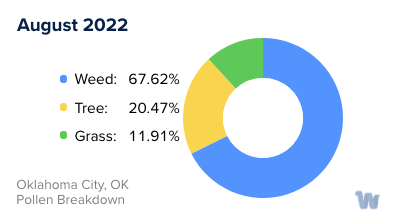
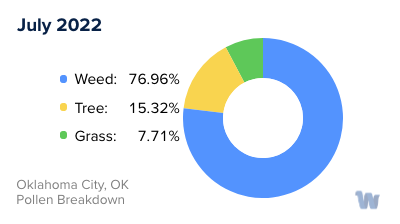
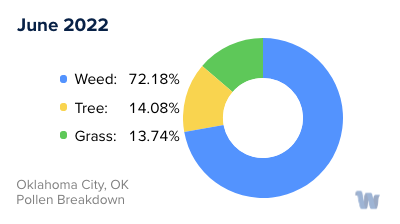
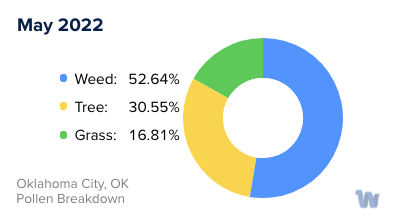
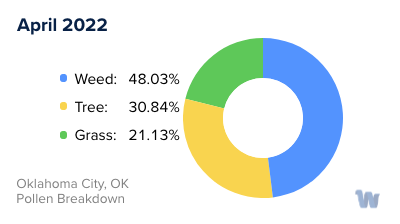
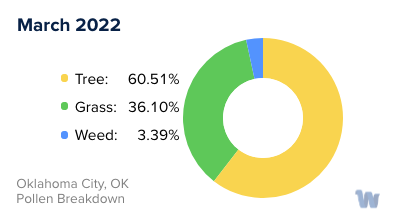
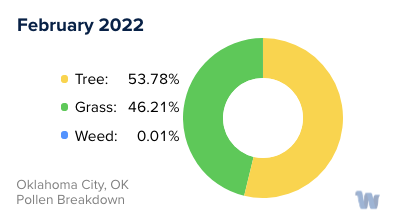
Pollen and Hay Fever in Oklahoma City, OK
If you're living in Oklahoma City, Oklahoma, you're no stranger to the puffs of pollen that fill the air during certain seasons, triggering what we often call 'hay fever,' or more formally, seasonal allergic rhinitis. This condition is caused by an allergic response to airborne substances, including various types of pollen, that flourish at different times of the year in this region.
The symptoms of hay fever can be quite noticeable, from itchy eyes and sneezing to a runny nose and sinus pressure, all thanks to the microscopic particles that trees, grasses, and weeds release into the air to fertilize other plants.
The primary types of pollen that cause allergies in Oklahoma City are tree, grass, and weed pollen. Each has a specific season in which they peak, making certain times of the year more challenging for those sensitive to these allergens.
Spring is the season when tree pollen is most prevalent. Trees such as oak, cedar, pine, and elm are common culprits in this region, producing fine, powdery pollen that can be carried on the breeze for miles. These tiny particles can easily find their way into your nose and eyes, leading to those familiar allergy symptoms.
As we transition into summer, grass pollen takes center stage. Bermuda grass, Kentucky bluegrass, and ryegrass are among the typical grasses in Oklahoma City that can cause allergic reactions. The grass pollination season usually extends into the early parts of summer.
Finally, as summer fades into fall, weed pollen, particularly from ragweed, becomes the primary allergen. Ragweed is notorious for its ability to produce a vast amount of pollen. A single plant can generate a billion grains in a season, and these can travel far and wide on the wind.
Understanding these patterns can help you anticipate and prepare for the allergy seasons in Oklahoma City. Remember, pollen counts can vary from year to year and even day to day, influenced by factors like weather conditions and temperature. Stay aware, and take care of your health during these pollen-rich periods.

